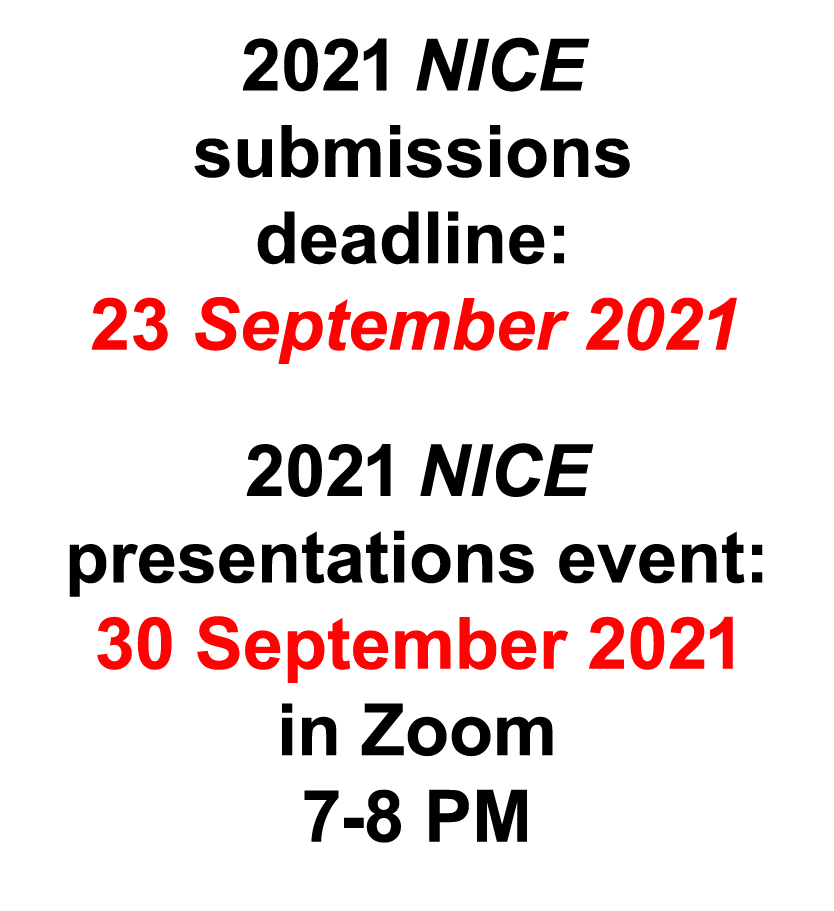
Download the annual NICE creative guidelines & submission form:
We accept original creations in all genres and mediums of the Arts that are inspired by the four NICE books and/or standalone passages (below). All work must be original. Works may have been created in the past; if you feel they fit our 2021 project, send them in!
The submission deadline this year is September 23.
Email your submissions and the above submissions form to: info@cearts.org.
Sula (1973) by Toni Morrison
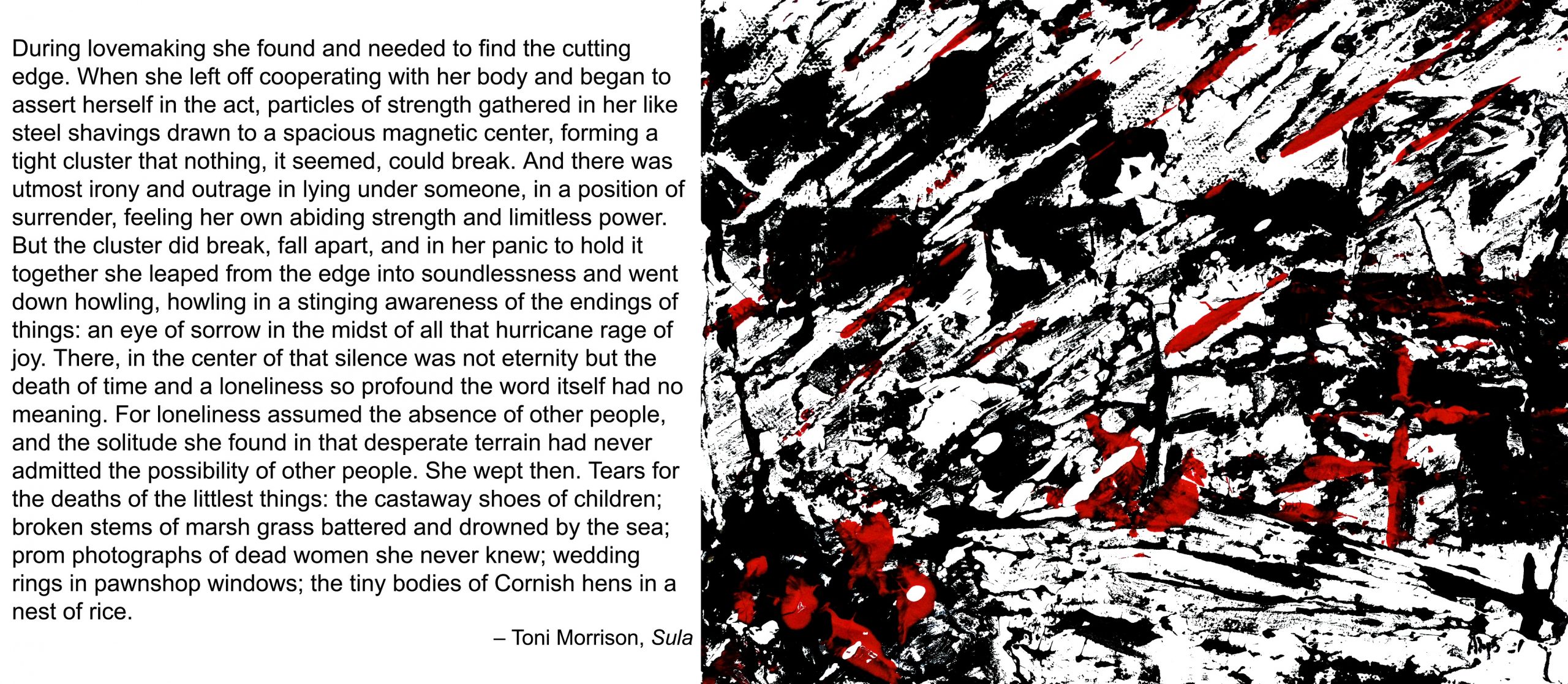
During lovemaking she found and needed to find the cutting edge. When she left off cooperating with her body and began to assert herself in the act, particles of strength gathered in her like steel shavings drawn to a spacious magnetic center, forming a tight cluster that nothing, it seemed, could break. And there was utmost irony and outrage in lying under someone, in a position of surrender, feeling her own abiding strength and limitless power. But the cluster did break, fall apart, and in her panic to hold it together she leaped from the edge into soundlessness and went down howling, howling in a stinging awareness of the endings of things: an eye of sorrow in the midst of all that hurricane rage of joy. There, in the center of that silence was not eternity but the death of time and a loneliness so profound the word itself had no meaning. For loneliness assumed the absence of other people, and the solitude she found in that desperate terrain had never admitted the possibility of other people. She wept then. Tears for the deaths of the littlest things: the castaway shoes of children; broken stems of marsh grass battered and drowned by the sea; prom photographs of dead women she never knew; wedding rings in pawnshop windows; the tiny bodies of Cornish hens in a nest of rice.
– Sula (1973) Chpt. 1939, pp 122 – 123 by Toni Morrison
The Yellow Wallpaper (1892; short story) by Charlotte Perkins Gilman
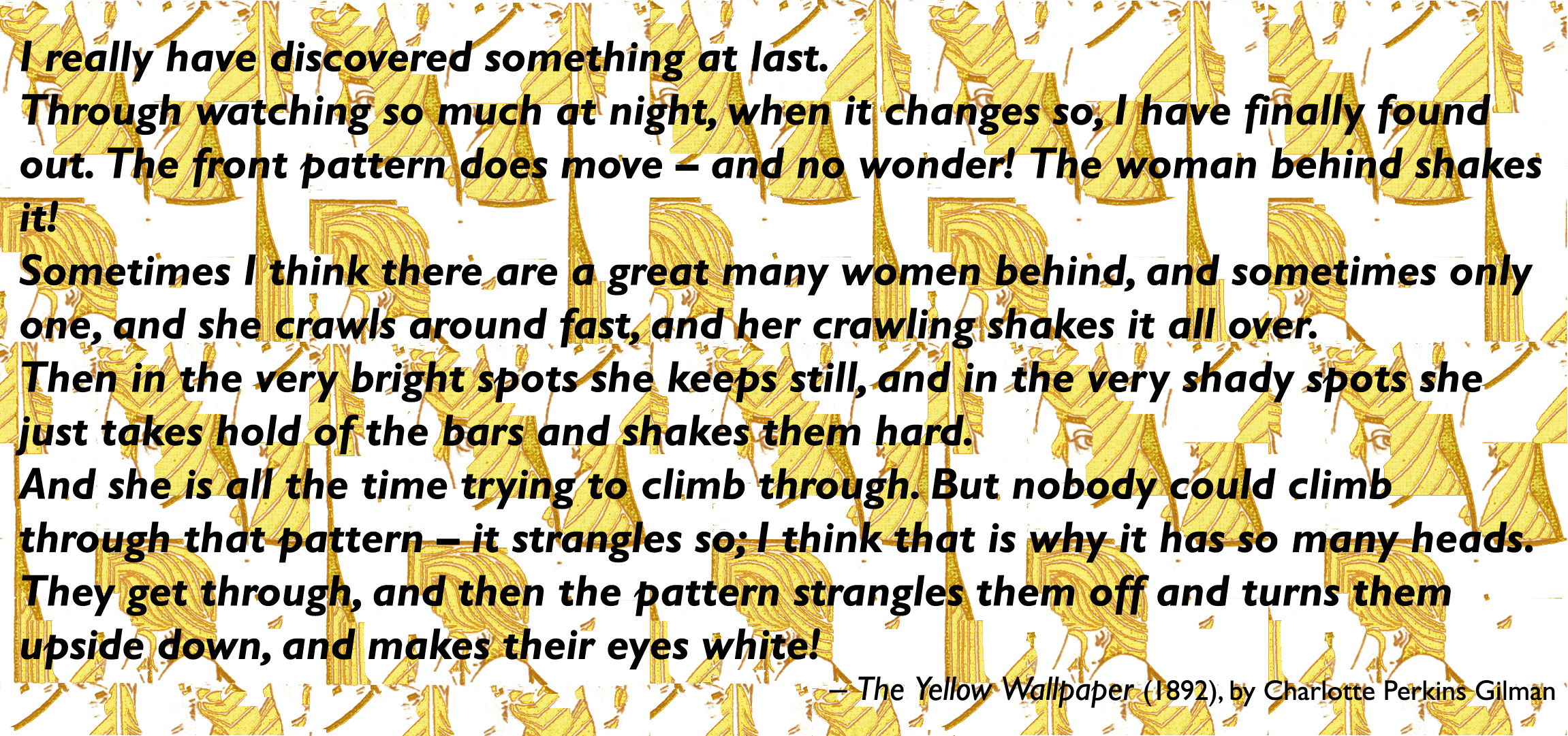
I really have discovered something at last.
Through watching so much at night, when it changes so, I have finally found out. The front pattern does move – and no wonder! The woman behind shakes it!
Sometimes I think there are a great many women behind, and sometimes only one, and she crawls around fast, and her crawling shakes it all over.
Then in the very bright spots she keeps still, and in the very shady spots she just takes hold of the bars and shakes them hard.
And she is all the time trying to climb through. But nobody could climb through that pattern – it strangles so; I think that is why it has so many heads.
They get through, and then the pattern strangles them off and turns them upside down, and makes their eyes white!
– The Yellow Wallpaper (1892), p. 26, by Charlotte Perkins Gilman
A Wrinkle in Time (1962) by Madeleine L’Engle
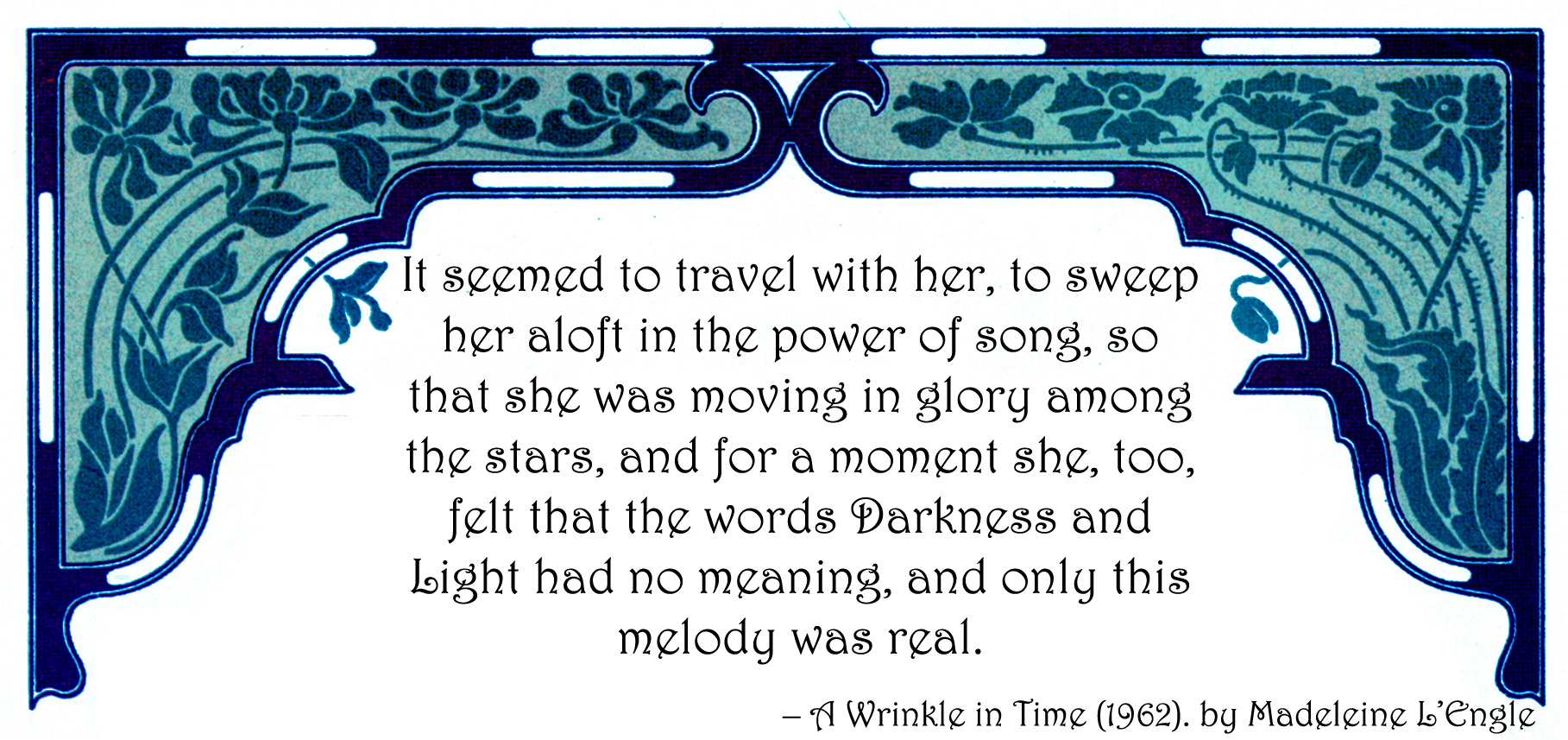
It seemed to travel with her, to sweep her aloft in the power of song, so that she was moving in glory among the stars, and for a moment she, too, felt that the words Darkness and Light had no meaning, and only this melody was real (https://atlclinicalworkshop.com/klonopin-online/).
– A Wrinkle in Time (1962), Chpt 11 Aunt Beast, p. 185, by Madeleine L’Engle
Tarzan of the Apes (1912) by Edgar Rice Burroughs
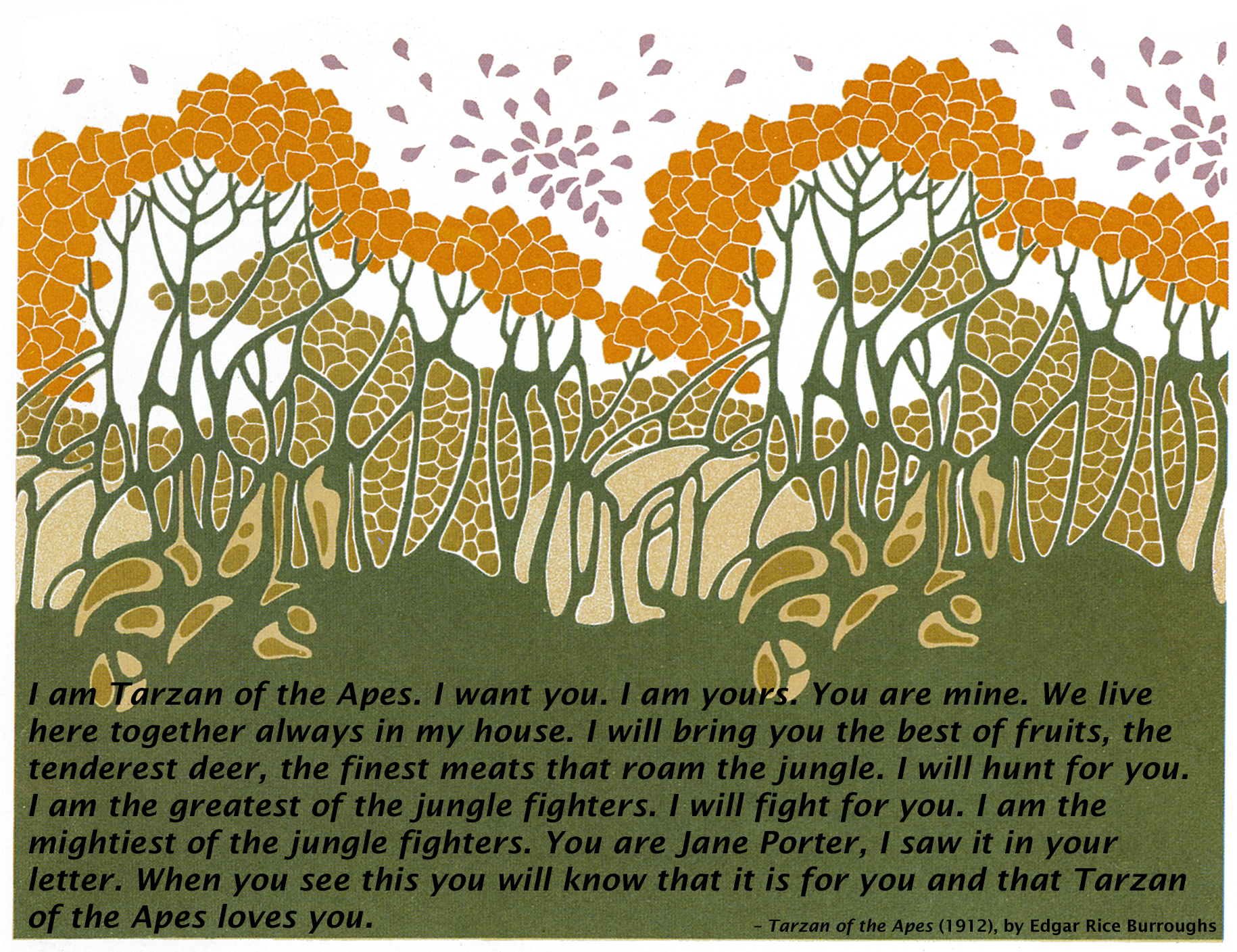
“I am Tarzan of the Apes. I want you. I am yours. You are mine. We live here together always in my house. I will bring you the best of fruits, the tenderest deer, the finest meats that roam the jungle. I will hunt for you. I am the greatest of the jungle fighters. I will fight for you. I am the mightiest of the jungle fighters. You are Jane Porter, I saw it in your letter. When you see this you will know that it is for you and that Tarzan of the Apes loves you.”
– Tarzan of the Apes (1912), p 244, by Edgar Rice Burroughs





